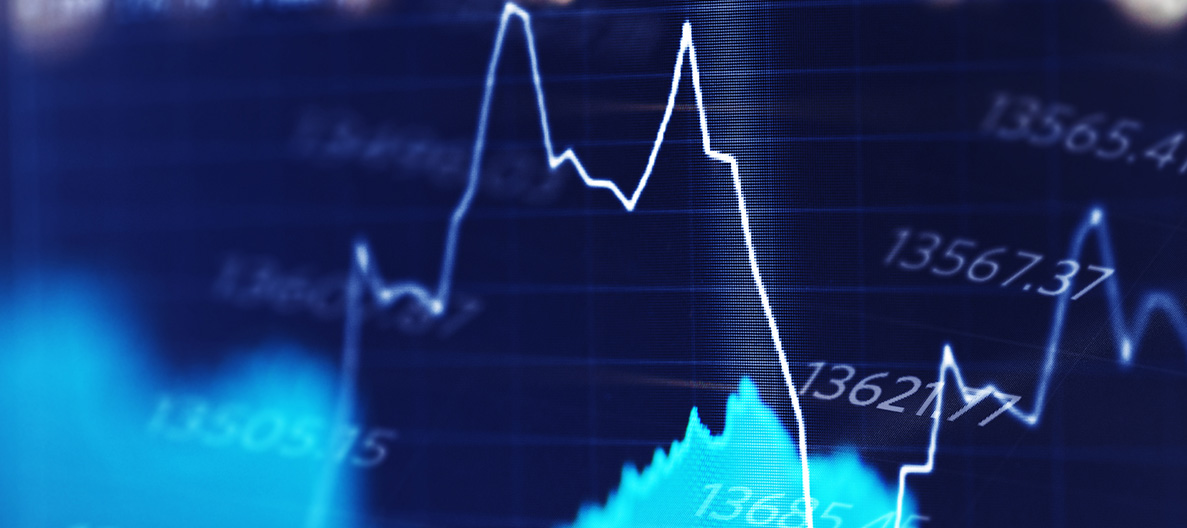by Liz Ann Sonders, Brad Sorensen, Jeffrey Kleintop, Charles Schwab and Company
Key Points
- With cracks forming in equity markets and economic uncertainty mounting, we believe it could remain a bumpy ride over the next few months.
- U.S. economic data is mixed but there are signs that manufacturing weakness is bleeding into the service side of the economy; although the consumer remains a support. Pressure is building on the Fed to be more aggressive in cutting rates, but we have doubts additional cuts will be the elixir for what ails the U.S. or global economy.
- A global manufacturing recession appears to be underway; if not yet an overall global economic recession.
“Trying to understand is like straining through muddy water. Have the patience to wait! Be still and allow the mud to settle.”
― Lao Tzu
Cracks appearing
U.S. equity indexes have recently experienced some wild swings and an uptick in volatility—yet they have also shown some resilience, potentially misleading investors that the recent economic downturn is simply a blip. Increased trade tensions with China via another threatened tranche of tariffs (although partially delayed); Beijing’s decisions to halt agricultural purchases from the United States, let the renminbi fall relative to the dollar, and threaten additional retaliations; inverted yield curves; have all contributed to growing consternation among investors.
Volatility has increased

As yields have fallen and the inversion has deepened

Adding to the worrisome mix are apparent increasing concerns regarding the slowdown in economic growth. Should it be the case that the United States is imminently heading into a recession, it’s possible we may already be in one, given that recessions are dated near the peak in economic activity. [Read more about recession risk in Recession Watch (or Distant Early Warning).]
Lost in the day-to-day trade-related volatility are longer-term concerns. Trade is not the only culprit behind weak global growth. Protectionism has been growing as a global force—predating the start to the trade war—while significant demographic hurdles and the negative consequences of $16 trillion of negative yielding debt globally are wreaking havoc on growth. In addition, the global central bank coordination which helped bring the global financial crisis to an end has been fractured courtesy of protectionism, the trade war and political pressure on central banks. This begs the question of whether easier monetary policy is sufficient to offset the ripple effects if global growth continues to weaken and/or the trade-related hit to U.S. corporate confidence.
Mixed economy tilting toward the downside?
Much of the recent volatility has likely been a symptom of investors trying to determine the extent of the U.S. economy’s weakness. The trade dispute with China has already hurt the manufacturing side of the economy, which is likely to be exacerbated by the multiplication of tensions. Manufacturing measures, such as the Institute for Supply Management’s (ISM) Manufacturing Index, and commodities that are indicators of economic growth, have both weakened of late.
Oil and copper have shown signs of global economic weakness

The consumer side of the economy has held up well courtesy of still-healthy job and income growth, which has bolstered consumer confidence and spending. The only rub here is that high readings on consumer confidence have historically been leading indicators of recessions (see first chart below), with variability around timing; so any downturn in confidence would elevate recession risk. And although initial unemployment claims remain historically low (see second chart below), any sustained uptick—given their leading indicator status—would be troublesome.
Consumer confidence remains high

As claims remain low

For now, the weakness in the U.S. economy is largely concentrated in manufacturing, but further weakness could start to bleed through to services—which may be expedited if trade tensions and uncertainties worsen. We have already begun to see some slowing in the ISM Non-Manufacturing Index and its forward-looking New Orders component.
Service side showing weakness

Pressure building on the Fed
With earnings season nearly over, Congress in recess through August, and a mixed economic picture, the focus is increasingly on the Federal Reserve. Pressure for further accommodative policy is rising as other central banks around the world have made dovish moves—pushing global interest rates even lower and putting upward pressure on the nearly $16 trillion of negative-yielding global debt (Deutsche Bank, CNBC). The spread between U.S. and global rates is drawing investors into dollar-denominated assets—especially Treasury securities, putting upward pressure on prices and downward pressure on yields. This has in turn pushed the dollar higher and made it more difficult for U.S. companies to compete internationally. Fed funds futures remain volatile, but another 25 basis points cut in September is fully priced in and the odds of subsequent cuts are rising. Yet, a race to the zero lower bound of rates may not be in the Fed’s best interest. We have long been adherents to Liz Ann’s mentor’s (Marty Zweig) admonition of “don’t fight the Fed;” and while we don’t yet want to fight, we also aren’t sure the Fed will have the same impact it has had in the past. Lower rates likely won’t help in the resolution of a trade dispute or entice hesitant companies to increase capital spending. At this point, the Fed appears to be between a proverbial rock and a hard place. If they don’t meet investors’ expectations, markets will likely respond poorly; but if they continue to ease, investor concern over the condition of the economy may rise. Thus, it seems that a sustainable uptrend in stocks in the near-term is unlikely and volatility will continue.
Germany: harbinger of global recession?
The United States isn’t the only country telling a tale of two economies (manufacturing versus services). Both major categories of economic output have diverged across the world, as global manufacturing output is contracting while services activity continues to expand.
Nowhere can we see this better right now than in Germany. This week, economic growth was reported to have stalled with gross domestic product (GDP) at -0.1% during the second quarter (Wall Street Journal). The German economy is caught between a deepening recession in its manufacturing sector, and a solid expansion in services, as you can see in the chart below showing Germany’s services and manufacturing purchasing managers indexes (PMIs)—with 50 marking the dividing line between growth and contraction.
Germany: manufacturing versus services

Source: Charles Schwab, Bloomberg data as of 8/14/2019.
The manufacturing downturn weighing on Germany is being felt around the world—with more than 75% of global manufacturing PMIs below 50. Thus, Germany is not a leading indicator but rather a reflection of what is happening broadly around the globe. At risk of oversimplifying the threat of recession globally, it generally comes down to manufacturing. Economists’ forecasts odds of a country entering a recession (a prolonged economic downturn) seem directly tied to the portion of economy devoted to manufacturing.
Manufacturing and recession odds for top 5 countries in MSCI EAFE Index

*Bloomberg-tracked consensus of economists’ forecasts
Source: Charles Schwab, Bloomberg data as of 8/14/2019.
At 21% of GDP, the German economy is more manufacturing-based than the average country (compared to 11% in the United States), which proves why this weakness is weighing heavily on growth and raising the risk of a German recession. This is despite a stronger service sector than in most other countries (including the United States), consumer demand that is benefiting from the lowest unemployment rate in about 40 years, pay hikes, and low borrowing costs.
Why is manufacturing so weak? The global manufacturing downturn is tied to a few factors:
- Manufacturing cycle downturns take place about every three years as a normal part of the business cycle (see Tariffs: Manufacturing A Recession).
- This downturn is being significantly deepened by the trade battles. The global manufacturing PMI has been falling 15 months in a row—beginning its decline with the initial U.S.-China tariffs that were implemented at the end of March 2018.
- Spending on big-ticket manufactured products has turned down. Sales of autos—the largest export product of Germany and Japan—have slumped in Europe, the United States, and even in China, the world’s largest car market.
Can lower interest rates save manufacturing? That seems unlikely—the yield on the German 10-year bond is -0.67% (FactSet); thus, it isn’t high interest rates that are weighing on manufacturing in Germany or elsewhere. However, a resolution to the trade battles taking place may go a long way.
What does this mean for stocks? Service sector strength has offset manufacturing weakness around the world. If the resilience in the service sector begins to fade, the odds of a broader global recession would increase markedly, adding to downside risks for global stocks. Alternatively, if this is a typical 18-month manufacturing cycle, manufacturing could begin to stabilize, along with global stock markets. For Germany, the stock market is tied to its largest manufactured good: autos. The chart below shows how closely the German stock market tracks the performance of global auto stocks.
German stocks: all about autos

Source: Charles Schwab, Bloomberg data as of 8/14/2019. Past performance is no guarantee of future results.
Dramatic headlines and volatile market swings make placing big bets or attempting to time the market especially dangerous. Investors should check their portfolios to make sure they are diversified across asset classes, as well as international versus domestic exposure.
So what?
Stock markets have become more volatile as trade tensions have worsened and weakness in the manufacturing side of the economy has caused increasing concern. Swift resolutions to these issues seem unlikely and a dovish Fed may not be the elixir to what ails the economy. With the likelihood of persistent volatility in the coming months, we recommend investors stay broadly diversified and focused on the long term. From a tactical perspective, we remain neutral to U.S. and global equities; with a bias within the U.S. market toward large cap stocks relative to small caps. Investors should not attempt to trade around short-term moves in the equity markets; but instead remain disciplined, diversified, and use rebalancing as necessary.
Copyright © Charles Schwab and Company














